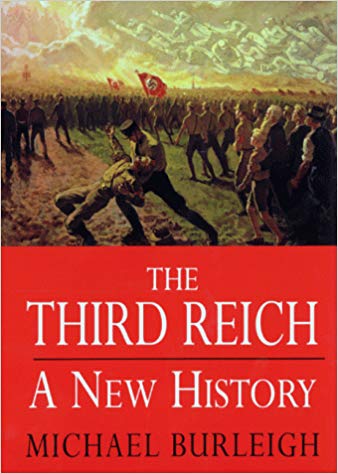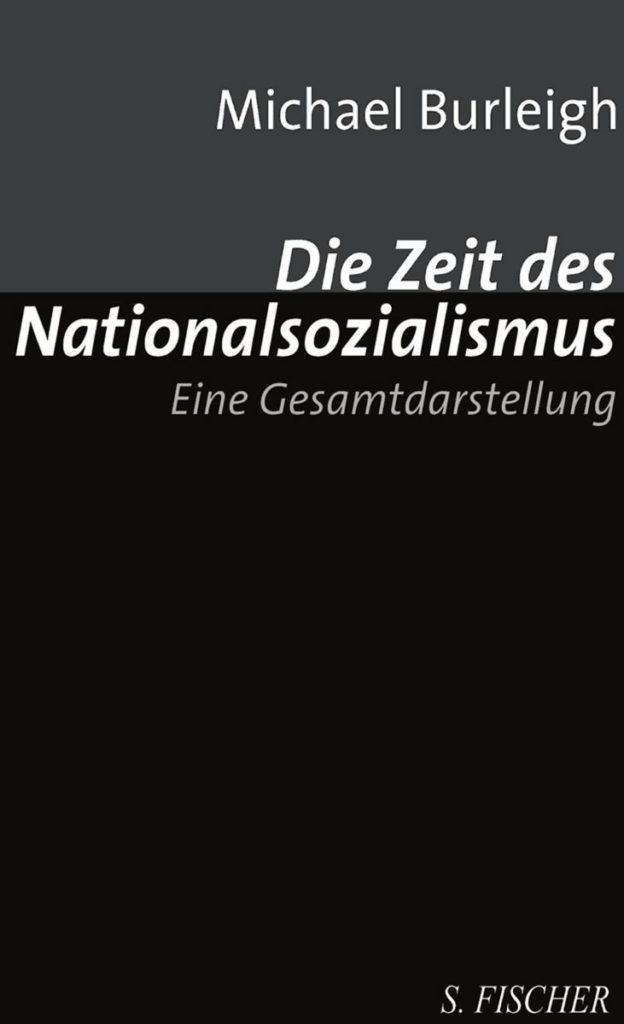
Michael Burleigh was born in 1955. Originally a medievalist at the University College of London and a Research Fellow at Oxford, he spent six years as a Professor at the London School of Economics and Political Science. In 1995, he became a Research Professor in Medieval History at Cardiff University. Since 1999, he teaches in the United States, first as Professor at Rutgers University, New Jersey, and since 2000 he occupies the chair for history at Washington & Lee University in Lexington (Virginia). Michael Burleigh has become an internationally acclaimed expert on Nazi Germany. His former books include Germany Turns Eastwards: A Study of “Ostforschung” in the Third Reich, Death and Deliverance and “Euthanasia” in Germany 1900-1945.
Burleigh’s interpretation of Nazi Germany in The Third Reich is based an the notion of “political religion”. Some of Hitler’s contemporaries as well as later political analysts and historians have already used this interpretative concept. Among them are Konrad Heiden, Eric Voegelin, Waldemar Gurian, Uriel Tal and George Mosse. Hitler becomes the “Messiah” who guides the movement. Therefore, Burleigh strongly opposes those analysts who interpret the Third Reich as structural results of a social dynamic gone out of control. In a certain contrast to Kershaw, he insists on the uniqueness of Hitler and on the view that all important decisions were taken in Berlin. The concept of “political religion” is his key in understanding way one of the most advanced industrial societies in the heart of Europe morally collapsed, why ‘sections of the German elites and masses of ordinary people ”chose to abdicate their individual critical faculties in favor of politics based on faith, hope, hatred and sentimental collective self-regard for their own race and nation.”
Burleigh does not try to come up with a grand new theory on Nazi Germany. He is indebted to earlier works by Bracher, Friedländer and many others – and he does not hide this fact. But he tries to deliver a more comprehensive history of the Nazi era than anyone before him. Among the topics he treats are the utopia of “Volksgemeinschaft” and the vision of a “new men”, the politics towards the Jewish people and the holocaust, eugenics and euthanasia, forced labor and the industrialized mass killings in concentration camps, pogroms and police terror, bureaucratic and scientific “rationality”, collaboration and resistance, the history of law and lawyers, generals and doctors. However, Burleigh neglects important aspects such as the economy, domestic and foreign policy, the conduct of war as well as the life of the “average” man. Therefore, his account is not as comprehensive as one might think.
The other concept used by Burleigh, besides “political religion”, is the theory of totalitarianism which asserts a close similarity of communism and fascism, more precisely, between the Stalinist Soviet Union and Nazi Germany. Hannah Arendt, Raymond Aron and Jacob Talmon are three precursors who inspired the author. Burleigh comes to the conclusion that, once the totalitarian regime was established, the only possible threat to the Nazi power could have come from people close to the center of power. This meant that the men who had helped Hitler rise to power would have had to turn against him. Burleigh does defend the men of July 20 (1944) who tried to assassinate Hitler and reestablish a conservative regime. According to the author, one should not judge their ideas with today’s measures of West Germany’s Fundamental Law (Grundgesetz), the post-war constitution, because their formative years went back to the Kaiserreich.
To readers familiar with the literature on the subject, Burleigh does not bring up much news, but he has to be praised for his effort to write a single volume spanning from the decay of the Weimar Republic to Nazi Germany and even above (until 1948). Burleigh is more interested in the history of ideas than in social history, and he insists on the fact that one can not neglect the European and even global context in which the Nazi regime was born.

Michael Burleigh: The Third Reich. Hardcover, Macmillan, September 2000, 992 p. Get it from Amazon.co.uk

Michael Burleigh: Die Zeit des Nationalsozialismus. Eine Gesamtdarstellung. Gebundene Ausgabe, S. Fischer, 2000, 1088 S. Bestellen bei Amazon.de.

Michael Burleigh: The Third Reich. Hardcover, Hill & Wang, October 2000, 864 p. Get it from Amazon.com.
This book review is based on the German edition of Die Zeit des Nationalsozialismus. Eine Gesamtdarstellung by Michael Burleigh. Hardcover, S. Fischer, 2000, 1088 p. Order this book from Amazon.com, Amazon.co.uk, Amazon.de.